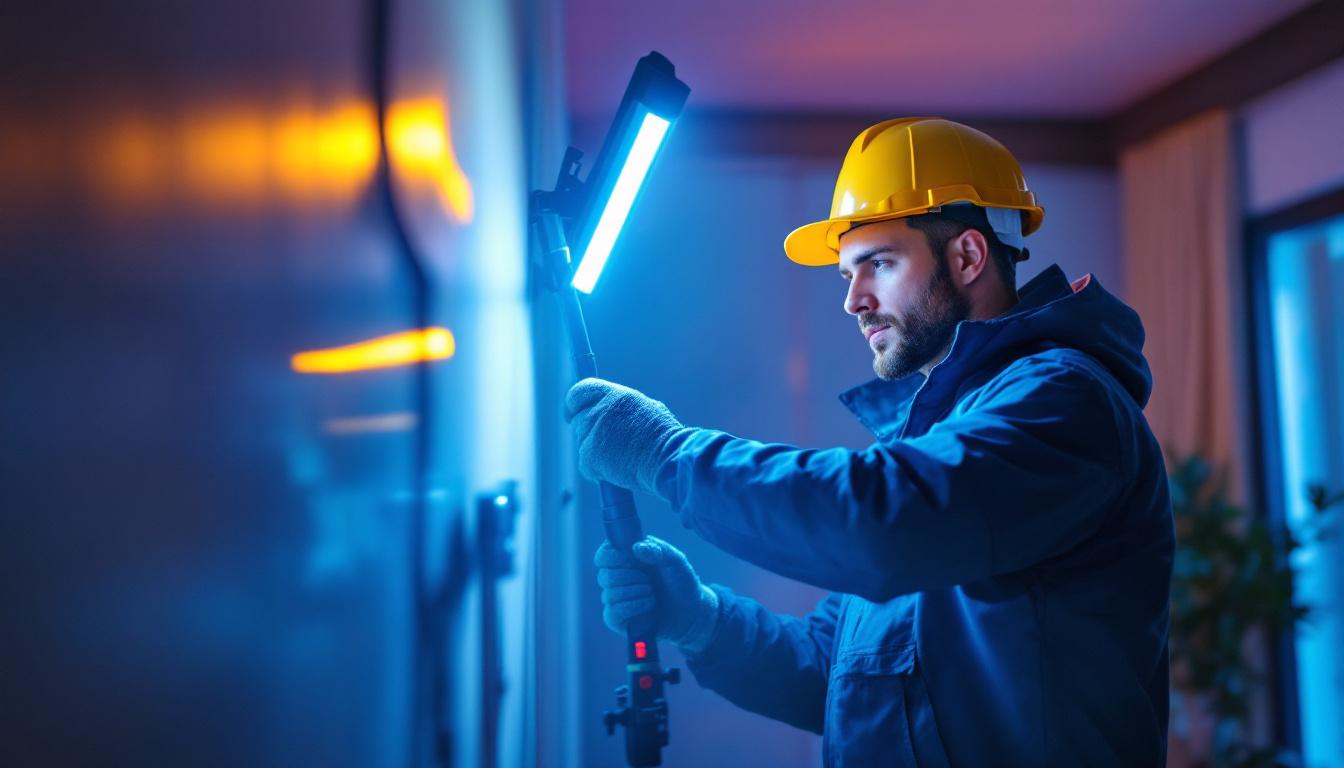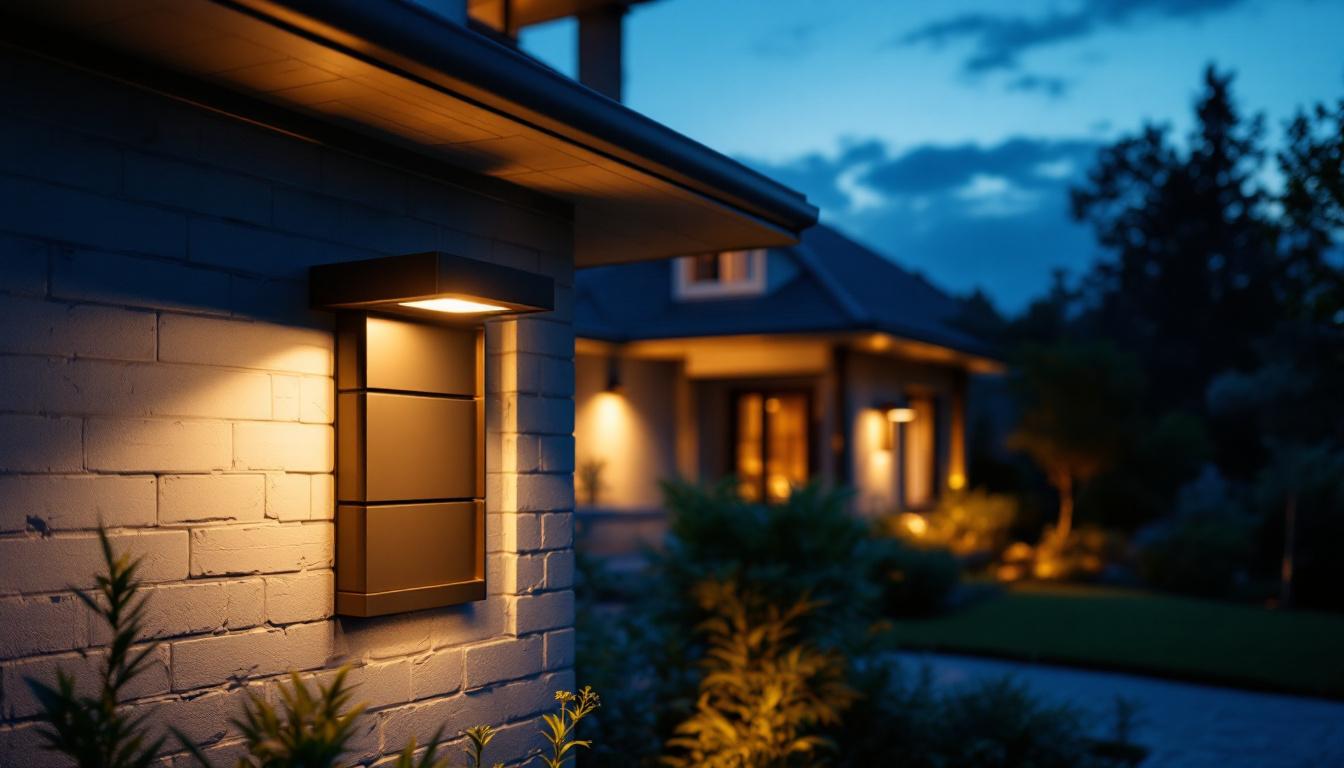
In the world of lighting installation, the importance of a reliable and efficient mounting bracket cannot be overstated. These seemingly simple components play a crucial role in ensuring that lighting fixtures are securely attached and positioned correctly. For lighting contractors, understanding the benefits and applications of mounting brackets can significantly enhance the quality and efficiency of installation projects.
Mounting brackets are hardware components designed to support and secure lighting fixtures to various surfaces, such as ceilings, walls, or poles. They come in various shapes, sizes, and materials, tailored to accommodate different types of fixtures and installation environments. The right choice of mounting bracket can influence not only the aesthetic appeal of the lighting but also its functionality and longevity. Proper installation of these brackets ensures that the fixtures remain stable and safe, preventing accidents and enhancing the overall lighting experience in any space.
There are several types of mounting brackets available, each serving specific purposes. Some of the most common types include:
Choosing the right type of bracket is essential for ensuring that the lighting fixture is not only secure but also positioned optimally for effective illumination. Additionally, the installation process may vary depending on the type of bracket selected, so understanding the specific requirements for each type can save time and prevent potential installation issues.
Mounting brackets can be made from a variety of materials, each offering different advantages. Common materials include:
Understanding the properties of these materials helps contractors select the most appropriate option for their specific projects, ensuring both safety and longevity. Moreover, the choice of material can also affect the installation method, as different materials may require specific tools or techniques to secure them properly. For instance, while steel brackets may necessitate heavy-duty screws and anchors, plastic options might be installed with lighter fasteners, making the process more accessible for DIY enthusiasts.
Proper installation of mounting brackets is critical for the overall success of a lighting project. An improperly installed bracket can lead to a myriad of issues, including fixture instability, misalignment, and even safety hazards. Therefore, attention to detail during the installation process is paramount.
One of the primary functions of a mounting bracket is to provide stability for the lighting fixture. A well-secured bracket ensures that the fixture remains in place, reducing the risk of it falling or becoming misaligned. This is especially important in high-traffic areas or locations where the lighting fixture may be subjected to vibrations or movement.
Moreover, safety is a crucial consideration. A loose or unstable fixture can pose a significant hazard to individuals in the vicinity. By utilizing high-quality mounting brackets and following proper installation procedures, contractors can mitigate these risks and enhance the safety of their projects. It’s also essential to regularly inspect these brackets over time, as environmental factors such as humidity, temperature fluctuations, and even pest activity can compromise their integrity. Regular maintenance checks can help identify any potential issues before they escalate into serious problems.
Beyond functionality, the choice and installation of mounting brackets can also impact the aesthetic appeal of a lighting installation. A well-chosen bracket can complement the design of the fixture and the overall decor of the space. For instance, decorative brackets can add an element of style, while minimalist designs can create a sleek, modern look.
Contractors should consider the visual aspects of mounting brackets in conjunction with the lighting fixtures themselves. This holistic approach can lead to more cohesive and visually pleasing installations. Additionally, the finish and material of the brackets can play a significant role in the overall ambiance of the room. For example, a rustic wooden bracket can enhance a vintage or farmhouse-style interior, while a polished metal bracket may suit a contemporary or industrial setting. By thoughtfully selecting brackets that harmonize with the surrounding decor, contractors can elevate the entire lighting experience, making it not just functional but also a key design element of the space.
When selecting a mounting bracket for a lighting installation project, several factors should be taken into account to ensure optimal performance and compatibility.
The weight and size of the lighting fixture are critical considerations. Heavier fixtures require more robust brackets that can support their weight without bending or breaking. Additionally, the size of the fixture may dictate the type of bracket needed; larger fixtures may require multiple brackets for adequate support.
Contractors should always check the manufacturer’s specifications for both the fixture and the bracket to ensure compatibility. This helps prevent issues during installation and guarantees the longevity of the lighting system.
The environment in which the lighting will be installed also plays a significant role in the selection of mounting brackets. Outdoor installations, for example, may require weather-resistant materials to withstand the elements, while indoor installations may prioritize aesthetic considerations.
Additionally, factors such as temperature fluctuations, humidity levels, and exposure to chemicals should be considered. Choosing brackets that are suited to the specific environmental conditions can enhance the durability and effectiveness of the lighting installation.
To achieve the best results when installing mounting brackets, following established best practices is essential. These practices not only ensure a secure installation but also contribute to the overall quality of the lighting project.
Every lighting fixture and mounting bracket comes with specific manufacturer instructions. Adhering to these guidelines is crucial for ensuring proper installation and functionality. These instructions often include important details about weight limits, installation techniques, and safety precautions.
Contractors should take the time to read and understand these instructions before beginning the installation process. This helps prevent mistakes and ensures that the installation meets industry standards.
Having the right tools on hand is vital for a successful installation. Common tools needed for installing mounting brackets include drills, screwdrivers, levelers, and measuring tapes. Using the appropriate tools not only speeds up the installation process but also ensures accuracy and safety.
Contractors should also ensure that their tools are in good working condition. Dull or damaged tools can lead to mistakes and may compromise the integrity of the installation.
As technology continues to evolve, so do the designs and functionalities of mounting brackets. Innovations in this area are enhancing the efficiency and effectiveness of lighting installations.
One of the most notable advancements in mounting bracket technology is the introduction of adjustable brackets. These brackets allow for greater flexibility in positioning lighting fixtures, accommodating various angles and heights. This is particularly beneficial in spaces where precise lighting is required, such as art galleries or retail environments.
Adjustable brackets can simplify the installation process, allowing contractors to make real-time adjustments without the need for additional hardware. This can save time and reduce the complexity of the installation.
Another innovation is the development of mounting brackets with integrated wiring solutions. These brackets come equipped with built-in electrical connections, streamlining the installation process by reducing the need for additional wiring and junction boxes.
This technology not only simplifies the installation but also enhances safety by minimizing exposed wiring. Contractors can complete projects more efficiently while ensuring compliance with electrical codes.
In summary, the role of mounting brackets in lighting installation projects is both significant and multifaceted. From ensuring stability and safety to enhancing aesthetic appeal, the right mounting bracket can make a substantial difference in the outcome of a project. By understanding the various types, materials, and best practices associated with mounting brackets, lighting contractors can improve their installation processes and deliver high-quality results.
As technology continues to advance, staying informed about innovations in mounting bracket design will further empower contractors to optimize their projects. By embracing these advancements and adhering to best practices, lighting professionals can ensure that their installations not only meet but exceed client expectations.
Ready to enhance your lighting installations with the best mounting brackets on the market? Look no further than LumenWholesale. Our extensive selection of spec-grade lighting products is designed to meet the highest industry standards, providing you with the reliable, high-performance lighting solutions your projects deserve. With unbeatable wholesale prices and the convenience of free shipping on bulk orders, you can trust LumenWholesale to supply premium lighting without the premium price tag. Elevate your lighting installations today by visiting Wholesale Lighting at the Best Value and discover the perfect blend of quality, affordability, and convenience.

Discover how partnering with LED EM lighting contractors can transform your business.

Discover how LED strip lights under cabinets are revolutionizing lighting contractors’ projects by enhancing aesthetics, improving energy efficiency, and offering versatile design options.

Discover the cutting-edge strategies lighting contractors use to harness UV lighting for enhanced safety and efficiency.

Discover how exterior coach lights can be a cost-effective solution for lighting contractors.